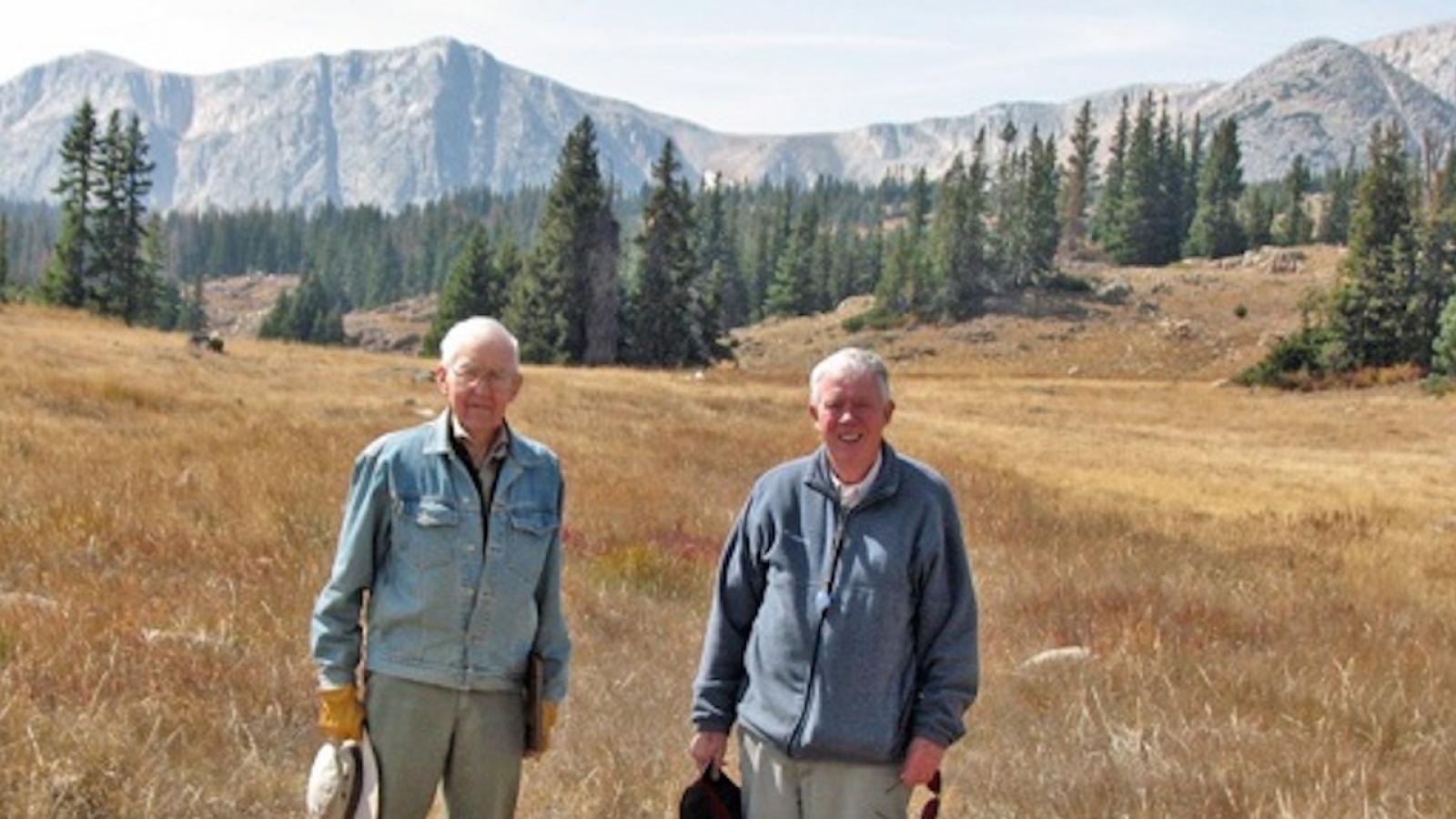This photo was taken by Prof Emeritus Jim Collinson: pictured are alumnus Don Boyd ‘50 (left) and Prof Collinson (right) looking at Proterozoic stromatolites in the Snowy Range west of Laramie. Don was Emeritus Professor at the University of Wyoming and was at OSU’s field camp in 1949 with many other illustrious alumni. This memoriam was written by alumnus Dr Jory Pacht, PhD 1980.
Many of you may know that a large donation ($500,000) was made to Friends of Orton by Don Boyd’s estate. Don Boyd was a Professor at University of Wyoming for his entire career. I received my M.S. at Wyoming (1976) and took courses from Don Boyd. I also was his TA. He was on my M.S. Committee and participated in my thesis defense.
The geology department at University of Wyoming, was and still is, an anomaly. University of Wyoming is a small school in a small state. The population of the State of Wyoming today is 579,000. That is about one-fourth of the population of Greater Columbus. Most students came from small isolated towns in Wyoming or even more isolated ranches. But the geology department was different. When I attended University of Wyoming, it was rated one of the top 20 geology departments in the country. That rating was well-deserved, due to professors like Don Boyd.
One of the first classes I took upon entering UW was carbonate sedimentology taught by Don Boyd. It was clear that Dr. Boyd, as we called him, was born to be a professor. He had a clear concise lecture style that made it fun and easy and to learn. He was very personable and always had time to talk geology with a student. Dr. Boyd had a unique way of answering student questions, which I copied when I was a TA and later taught industry courses. He would never give a student a direct answer. Instead, he would ask the student a series of questions, each designed to successively lead the student to the answer. By the time he finished the student would have answered his or her own question. This method not only taught the students stuff. It taught them how to think.
That does not mean that the Dr. Boyd’s courses were easy. We students had minds and his job was to challenge those minds. That meant pushing us well out of our comfort zones. That carbonate sedimentology course was where I wrote my first real scientific paper. Dr. Boyd asked us to write a “My Favorite Carbonate Rock” paper and required references. References? What does he mean by that? You mean there are refereed journals with scientific papers in them? Where do I find those? I got my B.S. at a very easy undergraduate school. So, going from there to a Dr. Boyd course was a bit of a challenge. But for those of us who were up to the challenge, he opened up a whole new world.
Dr. Boyd had a very rigid ethical code. I TA’d historical geology for him. When grading the tests, I observed that the answers of a boyfriend-girlfriend couple were suspiciously the same. Since the test included some essay questions, which were word-for word the same, I figured that this was not coincidental and informed Dr, Boyd. He immediately flunked both students and told one, who was a geology major, that she should consider another school. Her dad, who was a geologist, was a personal friend of Boyd’s. That didn’t matter!
Some today might think that Dr. Boyd’s punishment was too severe. But I can tell you that in the world of “little oil”, in which I dwell, we buy and sell drilling and production deals. I have seen deals on more than one occasion where the seller “forgot” to put dry holes on their maps, which were in the stated productive area. Ethics matter!!! I actually stayed in touch with that geology major. She did go to a different school, got her B.S. and M.S. in geology and had a very successful career in the petroleum industry. The life lesson she learned from Dr. Boyd was hard, but in the end benefited her.
From the perspective of an outsider, being a professor at a Tier 1 research university seems to be a very challenging job. You don’t get paid as much as you would in industry and you are constantly dialing for dollars to fund your research. But a professor can do something that no one in any other profession can. He or she can have a major, life-long, positive effect on those they teach. Only the very best are capable of this. Stig Bergstrom is one example. Don Boyd was another. Although I am pleased by the large award to Friends of Orton, I am saddened by Don Boyd’s passing.
Jory A. Pacht: Ph.D., Ohio State, 1980

